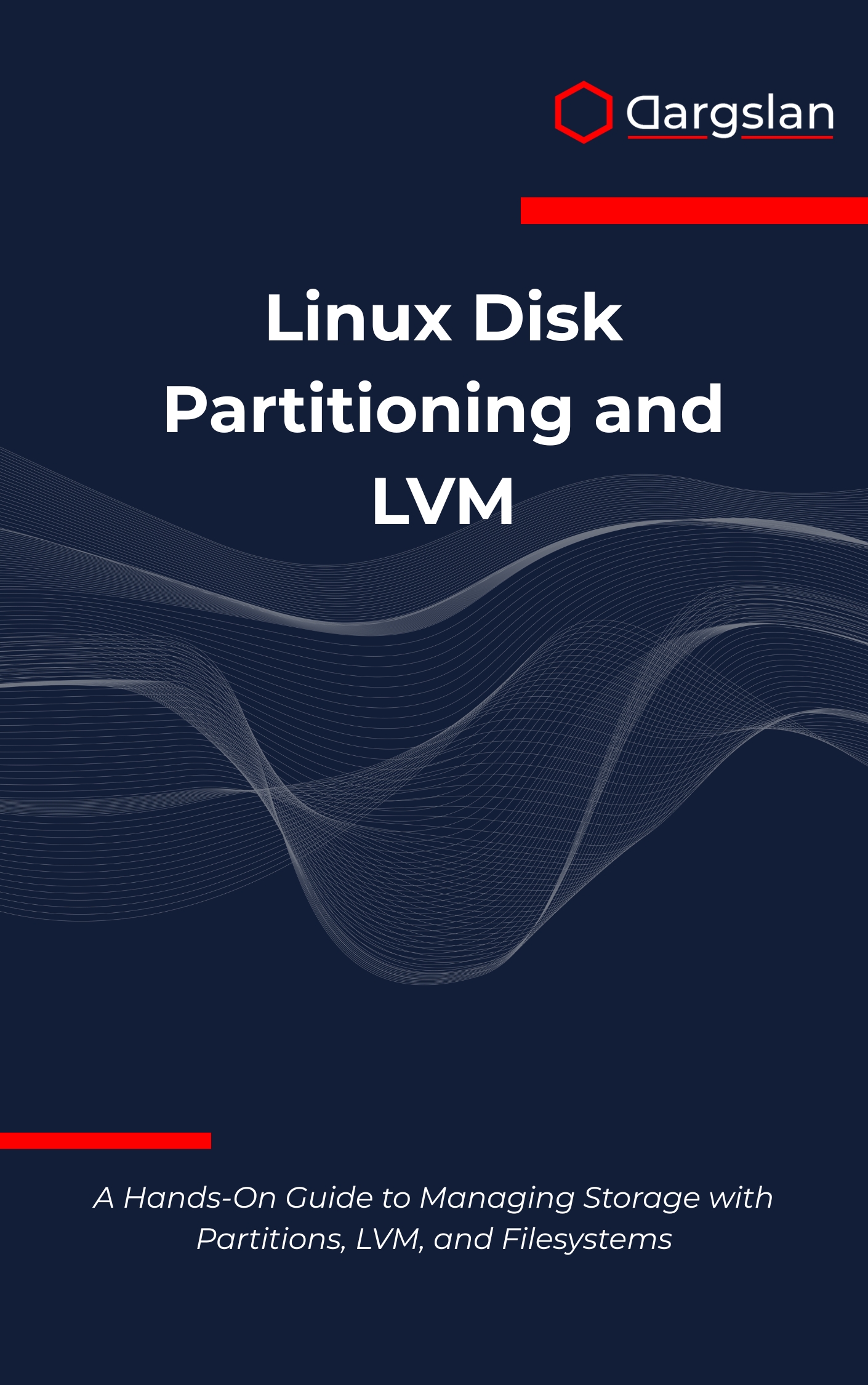Linux Disk Partitioning and LVM
Linux Disk Partitioning and LVM: A Comprehensive Guide to Storage Management,Manage and optimize Linux storage with expert LVM and partitioning strategies.

If you’ve ever hesitated before resizing a filesystem in production or wished you could expand storage without downtime, this book will be your new go-to. It demystifies partitions, LVM, and filesystems with practical, repeatable steps you can apply immediately.
A Hands-On Guide to Managing Storage with Partitions, LVM, and Filesystems
Overview
Linux Disk Partitioning and LVM delivers a comprehensive, practical roadmap for managing storage in Linux environments. As A Hands-On Guide to Managing Storage with Partitions, LVM, and Filesystems, it covers not only the how, but the why—making complex concepts accessible for daily operations across servers, VMs, and cloud instances. This IT book is both a programming guide and a technical book you’ll keep within reach for design, deployment, and troubleshooting.
Topics include Linux storage architecture, Disk partitioning with fdisk and parted, Filesystem creation and management, LVM physical volumes and volume groups, Logical volume creation and management, LVM snapshots and backup strategies, RAID integration with LVM, Storage automation and scripting, Boot-time storage configuration, Storage troubleshooting methodologies, Enterprise storage best practices, and Multi-disk storage configurations. Every chapter blends commands, design principles, and real-world considerations so you can move from theory to implementation with confidence. Whether you’re building a new stack or tuning a mature platform, you’ll find step-by-step workflows that scale.
Who This Book Is For
- New and aspiring Linux administrators who want a solid foundation in partitions, filesystems, and LVM. You’ll learn core concepts the right way—so routine tasks like extending volumes, mounting filesystems, and preparing disks feel straightforward and safe.
- Experienced sysadmins, DevOps, and SREs aiming to standardize and automate storage operations. Expect clear guidance on resilient layouts, online resizing, snapshots for backup and testing, and integrating RAID with LVM for high availability.
- Cloud, virtualization, and homelab builders who want to master multi-disk setups and avoid downtime. If you’re ready to upgrade from ad hoc fixes to enterprise-grade practice, this is your invitation to level up.
Key Lessons and Takeaways
- Design storage from first principles and implement it with confidence. You’ll map workloads to the right partition scheme, filesystem type, and LVM layout for growth, performance, and durability.
- Perform live storage operations with minimal risk. Learn how to extend logical volumes and filesystems online, take LVM snapshots for safe changes, and roll back fast when tests or updates go sideways.
- Build resilient, scalable storage at any layer. Combine LVM with RAID, automate provisioning and mounting, and codify best practices that work across physical servers, virtual machines, and cloud instances.
Why You’ll Love This Book
The writing is crisp, vendor-neutral, and focused on what actually works in production. You get step-by-step procedures, annotated command examples, troubleshooting checklists, and patterns that translate into repeatable, low-risk operations.
How to Get the Most Out of It
- Start with the fundamentals, then progress through partitions, filesystems, and LVM capabilities in order. By the time you reach advanced chapters, you’ll have the mental model to make smart design decisions and avoid rework.
- Apply each concept on a test host as you read. Practice creating physical volumes and volume groups, carving logical volumes for apps, and mounting filesystems with the correct options for performance and reliability.
- Tackle mini-projects: migrate a standalone disk to LVM, expand a production-like filesystem online, take and restore from LVM snapshots, and integrate RAID with LVM. Finish by scripting the setup so it’s repeatable.
Get Your Copy
Don’t wait for the next storage emergency to upgrade your skills. Build confidence, reduce downtime, and standardize your Linux storage operations with a proven, hands-on blueprint.




